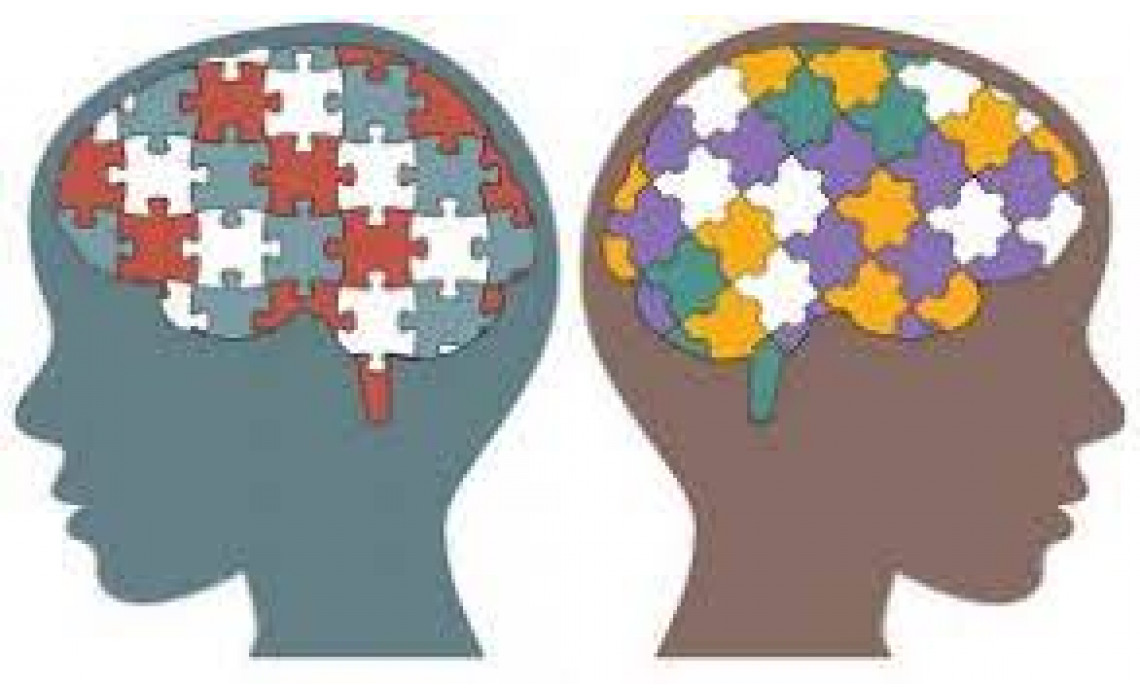Sensory Processing Disorder - How It Can Cause Picky Eating & More!
“Since eating is one of the most sensory-rich experiences we encounter, it’s logical that trying new foods can be overwhelming for those with Sensory Processing Disorder.”
Sensory processing is a vital process that refers to the way our nervous system interprets our senses and turns them into a response. Abnormalities with sensory processing can be diagnosed as Sensory Processing Disorder (SPD), formerly Sensory Integration Dysfunction. SPD can affect people in only one sense (i.e. only hearing, touch, etc) or it can manifest in multiple senses.For individuals with Sensory Processing Disorder, this means that the sensory information received by the brain is not organized appropriately or is “mixed up”.
Our main 5 sensory senses include:
Visual (sight)
Auditory (hearing)
Tactile (touch)
Olfactory (smell)
Gustatory (taste)
The STAR Institute for Sensory Processing Disorders also recognizes 3 other senses:
Vestibular (sense of head movement in space)
Proprioception (sensations from muscles and joints of body)
Interoception (internal sensations like hunger and thirst)
What Are The Signs Of SPD?
Individuals with SPD will be hypersensitive in one or more senses. Children who are hypersensitive to sensory stimulation can become overwhelmed easily. Children with SPD may be:
Unable to tolerate sudden or loud noises like the movie theatre, police sirens, or other noisy environments like restaurants or department stores
Overly sensitive to bright lights or bright colors
Excessively bothered by tags on clothing, seams of the socks, or other clothing that is unnoticeable to anyone else
Bothered or overwhelmed by background noise
Fearful of surprise touch and may avoid hugs and cuddling
Cautious or anxious around crowds and avoid being too close to others (or some children will be the opposite, they don’t understand personal space)
Clumsy or uncoordinated or have poor balance
Indifferent to pain or have an extremely high tolerance
Unaware or don’t understand their own strength or force
Unable so sit still or may be fidgety. Enjoys movement-based activities like spinning, jumping, etc.
Limiting of many foods in their diet and can make it extremely difficult to expose them to new foods
Sensory Processing Disorder And Picky Eating
Eating is one of the most sensory-rich experiences you can encounter. Close your eyes and imagine eating your favorite food. You smell the aroma of the food, hear the sound of the crunch, feel the consistency and texture, and experience the taste. To many of us, this is a very enjoyable experience, although imagine if you had Sensory Processing Disorder? Eating can quickly become a very stressful and anxiety-provoking activity because so many senses are overwhelmed at once. Many children on my caseload who are verbal and able to explain the reason they are not eating can very easily explain this to me, with most often texture being the culprit. For children who are non-verbal, if we pay close attention we can find different patterns and trends that can represent SPD.
If you have a picky eater, you should first identify if they are a problem feeder. Read my blog on Picky Eating vs Problem Feeding for more information. Children with Sensory Processing Disorder who are selective eaters particularly benefit from the SOS Approach to Feeding (which I integrate into my coaching sessions).
Sensory Processing Disorder & Autism
While children with SPD don’t have to have autism, most children with autism are also diagnosed with SPD. For parents with children with autism, you may notice that many of the symptoms of ASD overlap with the symptoms of SPD (see above). It’s important that we address both SPD and ASD for feeding instead of just one diagnosis. In my practice, 80-90% of the children I see have ASD but nearly 99% of my clients struggle with some sort of sensory processing issue.
One study showed that 90% of children with Autism Spectrum Disorders (ASD) demonstrate atypical sensory behaviors [1]. The same study also showed that children with autism have shared white matter disruption in sensory pathways with children with SPD but diverged connectivity in social-emotional pathways [1]. This tells us that there are many similar pathways between ASD & SPD but the diagnoses have major differences as well.
Nutritional Issues Caused By SPD
If a child with SPD is selective about the foods in their diet, they are likely not consuming a diet rich in nutrients (namely from food sources such as vegetables, fruit, and whole grains). They often are consuming highly processed, high-carbohydrate foods such as chicken nuggets, french fries, chips, crackers, and other starchy or fried foods. By exclusively consuming these foods long-term, it makes these children high-risk for issues such as:
NUTRIENT DEFICIENCY
Consuming a limited range of foods decreases the amount of micronutrients (vitamins and minerals) and macronutrients (protein, fat, carbohydrates) consumed. Most often, micronutrients are the biggest issue as depletions of certain vitamins and minerals can worsen symptoms of ASD, ADD/ADHD, and other neurological issues. Certain nutrients, such as zinc, can even cause decreased taste receptors or cause anorexia (loss of appetite) [2]. There are a myriad of nutrients that are commonly deficient in autism and can cause additional issues.
YEAST OVERGROWTH
Yeast (most commonly Candida) can grow anywhere in the body, especially the gut. The gut’s environment is perfect for yeast to grow and colonize. Yeast’s preferred energy source is sugar, and when yeast inhabits a host’s body (human or animal) it can even cause the host to crave foods that will provide it with that energy source (causing cravings of carbohydrates/starches, refined sugars, and processed foods). There are many different ways to get rid of yeast including diet change, anti-fungal nutrition supplements, and medications (consider side effects). Nutrition supplements that are naturally anti-fungals include:
Oil of oregano
Caprylic acid
Garlic
Black Walnut
Berberine
Some of my favorite herbal supplements include:
BACTERIAL DYSBIOSIS
We all have trillions of bacteria living in our gut. Some bacteria is “good” and some bacteria is “bad”. An imbalance of good/bad bacteria in the gut is called dysbiosis. There are many things that impact your gut bacteria from your environment, your stage of life, if you were born via vaginal birth or Cesarian, your hygiene, and most importantly: DIET! Certain foods grow certain bacteria in our gut, and the most important factor is fiber. Foods containing fiber allow the good bacteria in our gut to ferment the fiber and grow and colonize, while foods that do not contain fiber and only contain simple carbohydrates (sugar, starch, etc.) feed our bad bacteria which help them grow and colonize. The best thing we can do for our gut bacteria is consume a diet rich in fiber, which is usually uncommon in individuals with SPD. A few ways we can help balance the bacteria in our gut is to:
Increase consumption of fiber
Decrease intake of sugar and simple carbohydrates
Take a high-dose probiotic
Try herbal supplements (see my recommendations in the section above)
Some of my favorite probiotics include:
Capsules:
Powder:
BLOOD SUGAR IMBALANCE
Whenever an individual is consuming a diet primarily consisting of sugar, starch, and carbohydrates, this causes blood sugar to dramatically peak and valley, instead of gradually rising and falling. When our blood sugar spikes it tells our pancreas that we need a large amount of insulin to bring it down, so when a large amount of insulin is released it can cause our blood sugar to drop too much. This is referred to as reactive hypoglycemia. Symptoms may include:
Anxiety
Fatigue
Headache
Irritability
Light-headedness



